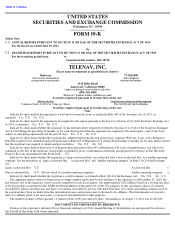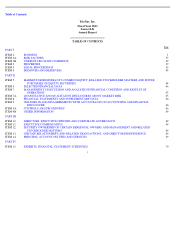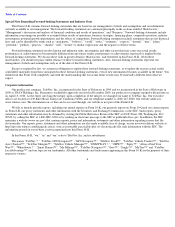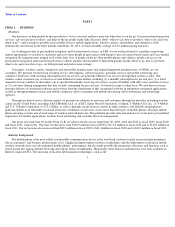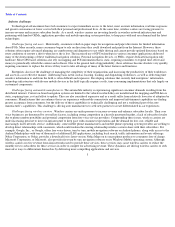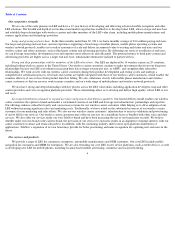TeleNav 2011 Annual Report Download - page 7
Download and view the complete annual report
Please find page 7 of the 2011 TeleNav annual report below. You can navigate through the pages in the report by either clicking on the pages listed below, or by using the keyword search tool below to find specific information within the annual report.
Table of Contents
Industry challenges
Technological advancements have led consumers to expect immediate access to the latest, most accurate information, real time responses
and greater convenience at lower cost in both their personal and professional lives. At the same time, wireless carriers are facing pressure to
increase revenue and increase subscriber loyalty. As a result, wireless carriers are investing heavily in wireless network infrastructure and
partnering with handset OEMs, application providers and mobile operating system providers, to keep pace with end user demand and the latest
technologies.
Challenges facing end users . Historically, consumers relied on paper maps for navigation and paper directories for limited information
about POIs. More recently, many consumers began to rely on directions they could download and print from the Internet. However, these
solutions often require advanced planning, are cumbersome and dangerous to use while driving and cannot provide updated directions based on
route conditions or reroute a driver when he or she is lost. The increased use of GPS technology in various consumer applications addressed
many of the shortcomings of these traditional navigation solutions. Personal navigation devices, or PNDs, require dedicated navigation only
hardware. Most GPS based solutions also rely on mapping and POI information that is static, requiring consumers to expend time, effort and
money to periodically refresh the content and software. Due to the general lack of upgradeability, these solutions become obsolete very quickly,
requiring consumers to replace the device if they want to take advantage of many of the latest features and functions.
Enterprises also face the challenge of managing the complexity of their organizations and increasing the productivity of their workforces
and assets in a cost effective manner. Addressing basic needs such as locating, tracking and dispatching workforces, as well as delivering time
sensitive information to and from the field, is often difficult and expensive. Developing solutions that securely link enterprises’ information
technology infrastructure with diverse mobile devices in the field typically requires costly, time consuming implementations that rely largely on
customized components.
Challenges facing automobile manufacturers. The automobile industry is experiencing significant consumer demands resulting from the
distributed internet. Current on-board navigation systems are limited to the vehicle in which they are installed and the mapping and POI data is
static, requiring time, cost and effort to update. They are also considered expensive and as a result suffer from relatively low rates of adoption by
consumers. Manufacturers that can enhance the in-car experience with mobile connectivity and improved infotainment capabilities are finding
greater acceptance from consumers, but the delivery of these capabilities is technically challenging and not a traditional part of the auto
manufacturer’s capabilities. This challenge is driving auto manufacturers to seek new partners to create differentiated in-car experiences.
Challenges facing wireless carriers . Wireless carriers are under pressure to increase revenue and enhance subscriber loyalty. Their core
voice businesses are threatened by several key factors, including strong competition in a heavily penetrated market, a lack of subscriber loyalty
due to phone number portability and potential competition from free voice service providers. Compounding these issues, wireless carriers are
under increasing pressure to invest in infrastructure to keep pace with consumer expectations and the demand for low cost, reliable and
increasingly faster network service. Additionally, some mobile phone manufacturers and mobile phone operating system providers are seeking to
develop direct relationships with consumers, which could weaken the existing relationship wireless carriers share with their subscribers. For
example, Google, Inc., or Google, offers free voice driven, turn by turn, mobile navigation software on Android phones, along with access to the
Android Marketplace with tens of thousands of additional LBS applications, including local search, traffic information and events offerings.
Nokia Corporation, or Nokia, provides a download for its latest version Nokia Maps on its smart phone products to consumers free of charge.
Microsoft Corporation, or Microsoft, also provides free turn by turn navigation software on its Windows Mobile operating system. Although
wireless carriers receive revenue from data networks used to provide these services, these services may cause wireless carriers to reduce the
monthly fees to subscribers for these services in order to compete for advertising revenue. These dynamics are driving wireless carriers to seek
innovative ways to differentiate themselves by delivering more compelling applications and services.
3


